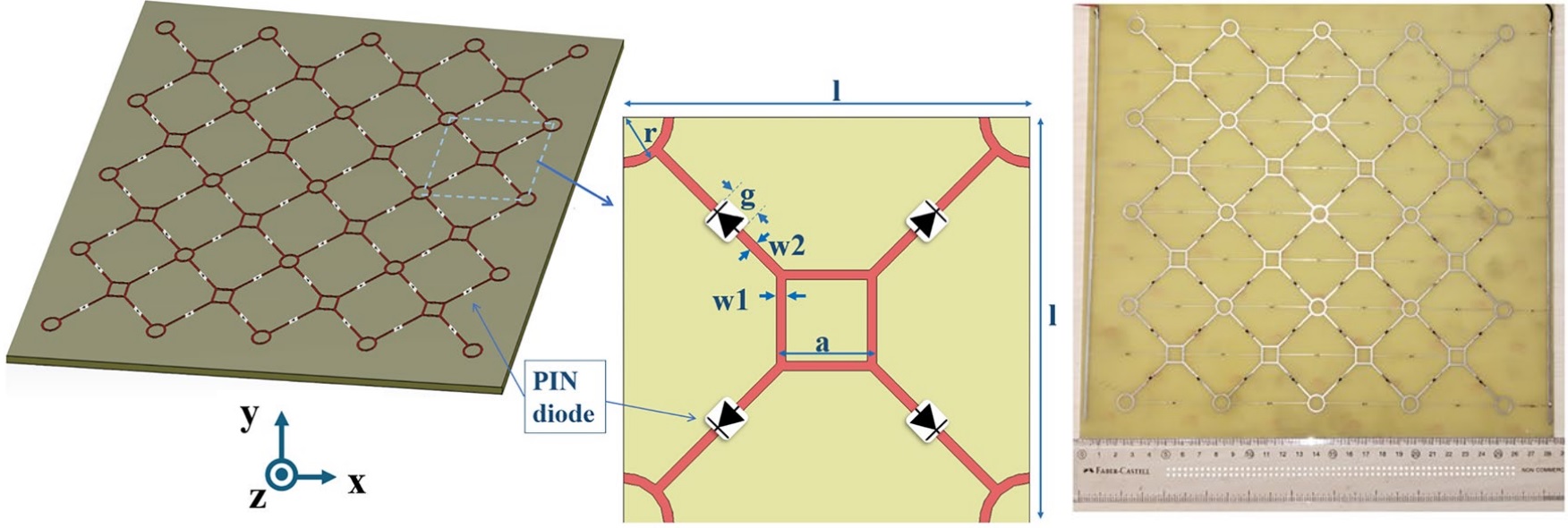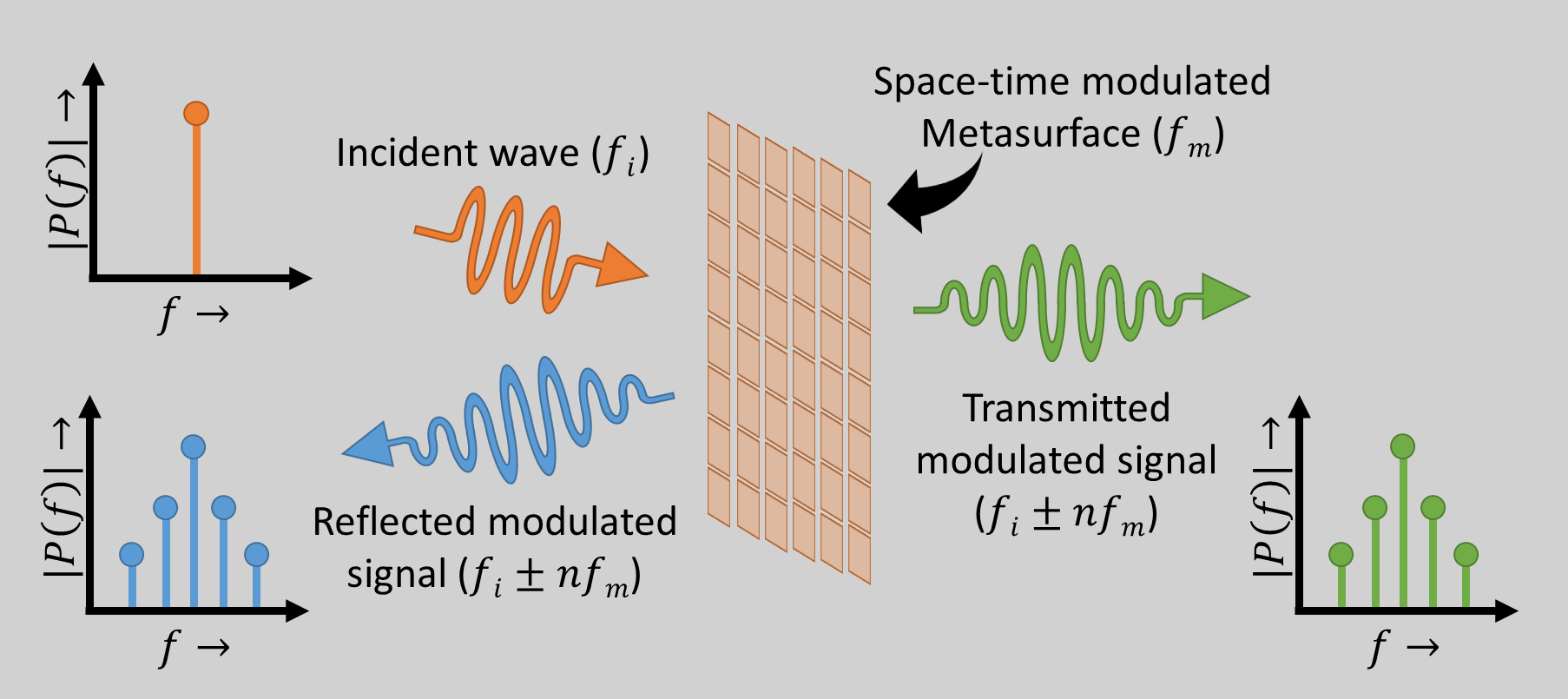Multi-functional Time-varying Microwave Metasurfaces

The rapid growth of wireless technology has led to significant electromagnetic interference (EMI) issues among neighbouring electronic devices. Frequency Selective Surfaces (FSS) provide a cost-effective solution to conceal components and reduce EMI, offering band-pass or band-stop responses and are used in various applications such as spatial filters, antenna reflectors, and absorbers.
In this context, artificially engineered 2D metasurfaces (“meta” in Greek meaning “beyond”) have gained popularity over the last two decades, where the surface impedance tensor can be manipulated by changing the configuration of the meta-atoms (or unit-cells), leading to frequency selective reflection, transmission, absorption as well as beam-steering capabilities. With the unit-cells loaded by PIN/Varactor diodes, metasurfaces can function as active FSS with reconfigurable/tuneable frequency response in transmissive as well as reflective modes. Very recently, time-modulated metasurfaces and their interaction with electromagnetic waves have garnered attention among applied electromagnetic engineers, since these structures can lead to potential future applications in non-reciprocal antenna design as well as Doppler Radar spoofing via on-air mixing applications.
A new study led by Debdeep Sarkar at the Department of Electrical Communication Engineering (ECE), conceptualises the design of a reconfigurable metasurface that can perform multiple functions based on its bias state, such as spatial filtering and on-air frequency mixing.

Illustration depicting on-air frequency mixing using time-modulated metasurface
The proposed metasurface is a switchable transmissive/reflective surface, which demonstrates more than 30 dB attenuation for a stop band of 0.55 GHz (22% bandwidth) around a centre frequency of 2 GHz. Due to the fourfold symmetry of its unit-cell, the proposed metasurface obtains high shielding effectiveness for a wide-range of incidence angles and polarization angles of the incident EM wave.
The on-air mixing capabilities of the proposed multi-functional metasurface are also demonstrated through lab experiments. To simulate the time-varying properties of the proposed metasurface and predict the on-air mixing features, a tailored finite-difference time-domain (FDTD) model was developed for the first time. Measurement results on fabricated metasurface show satisfactory correlation with simulated results, confirming its multi-functional capabilities and improvements over previous designs.

Left to Right: Debdeep Sarkar, Anand Kumar, Yugesh Chandrakapure
REFERENCE:
Kumar A, Kongari S, Chandrakapure Y, Sarkar D, Multi-functional metasurface as a transmissive/reflective FSS and an on-air frequency mixer, Scientific Reports (2024)
LAB WEBSITE:
https://ece.iisc.ac.in/~debdeeps/






